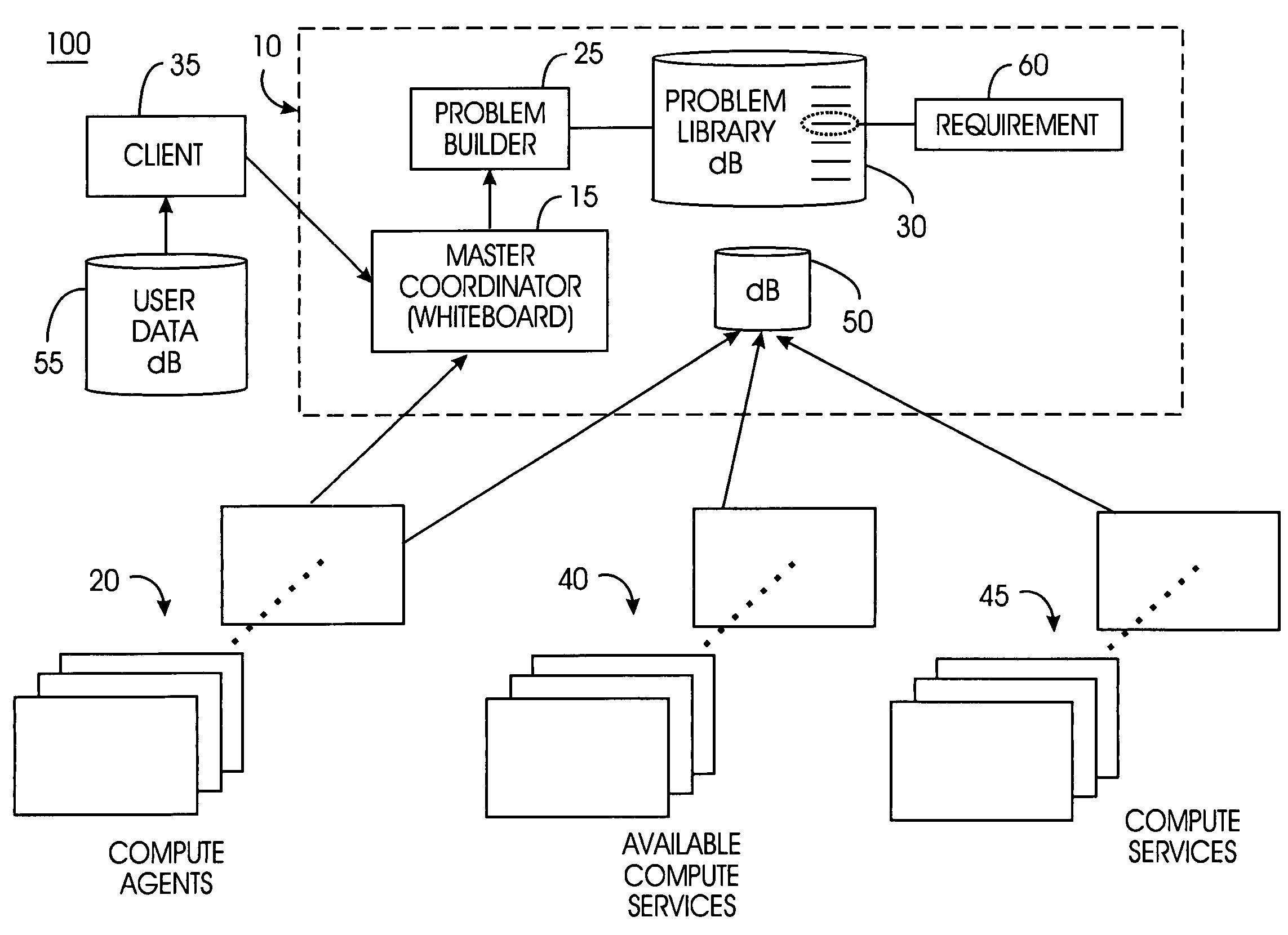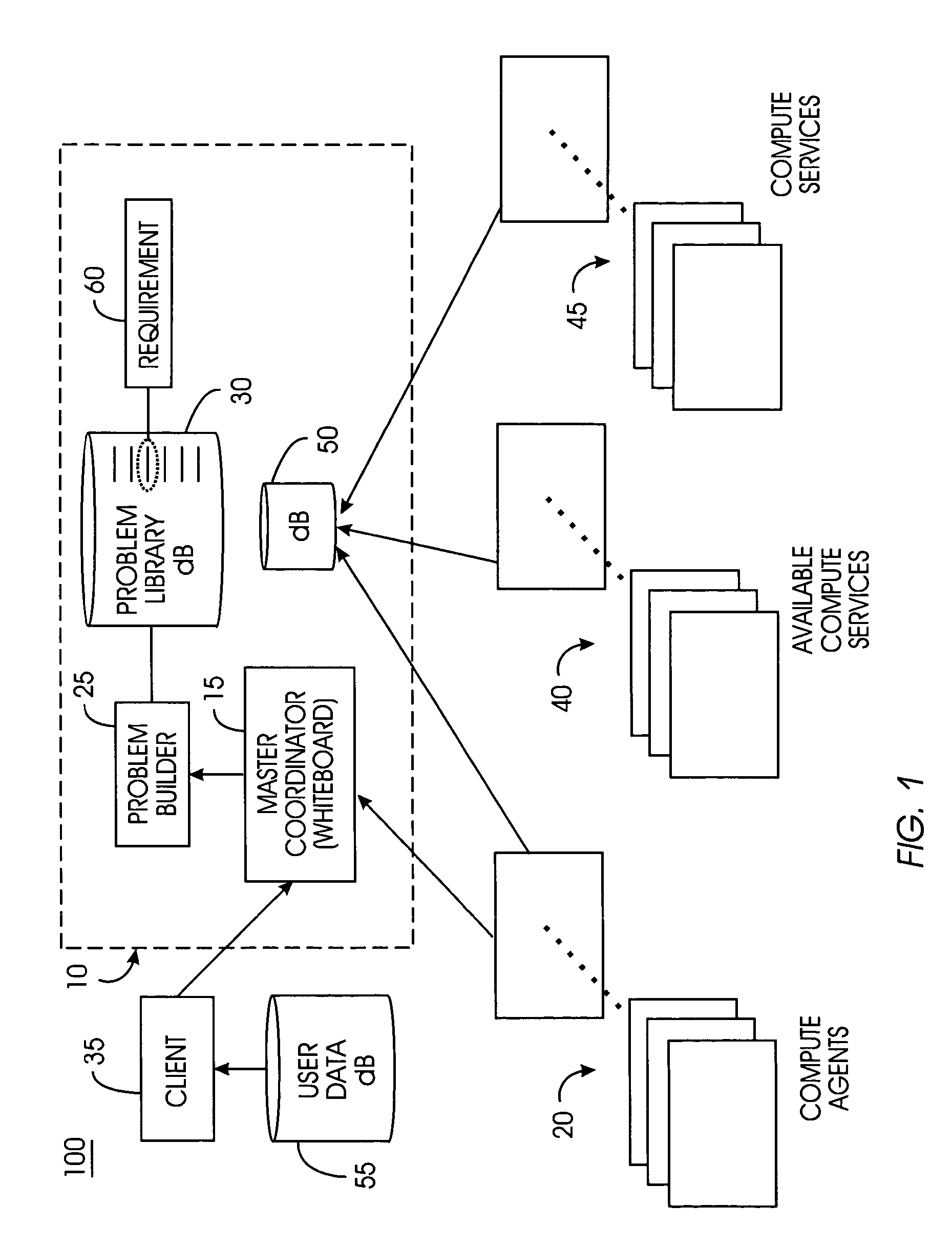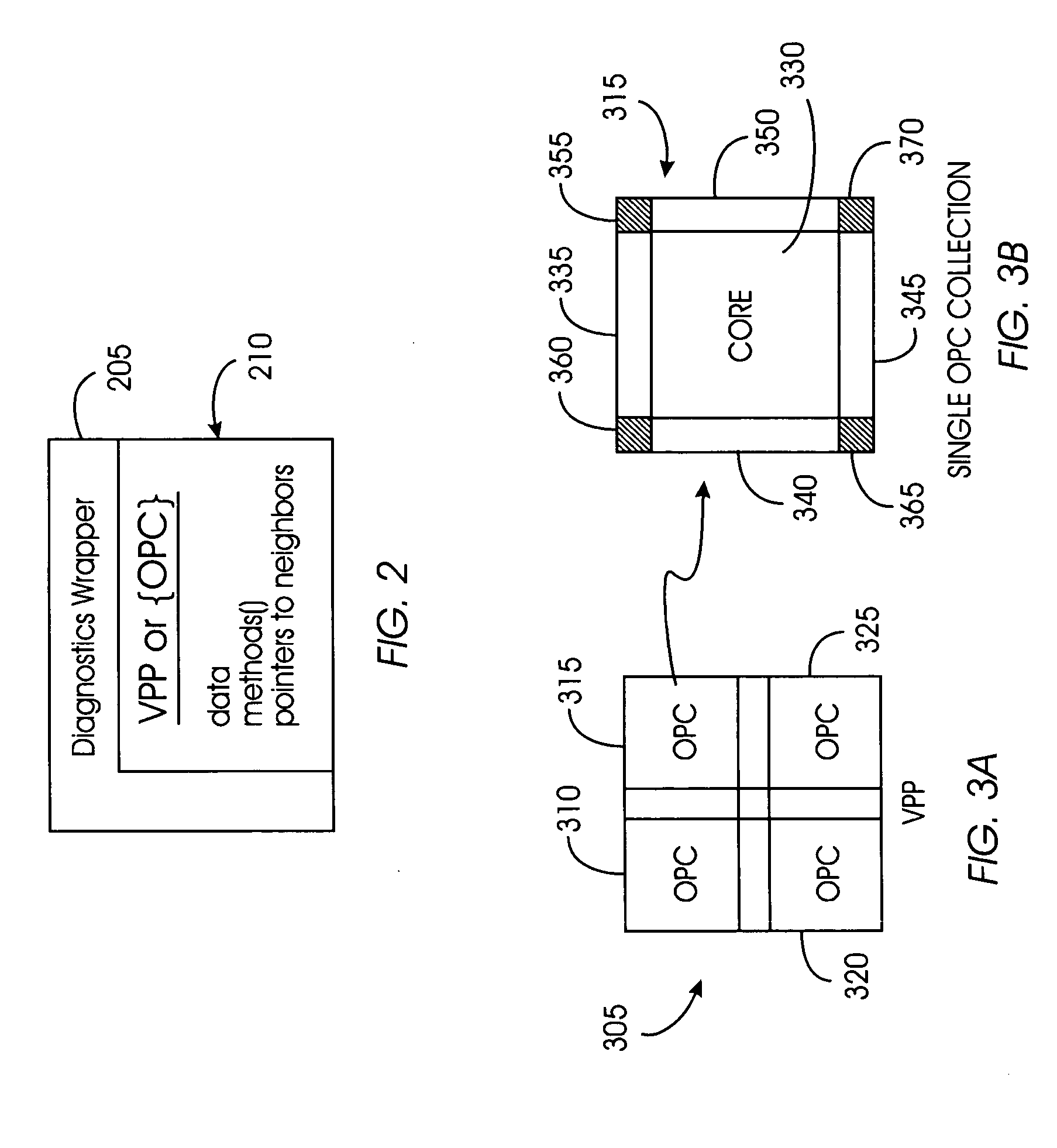System and method for automatically segmenting and populating a distributed computing problem
a distributed computing and problem technology, applied in the field of distributed parallel computing tasks, can solve the problems of nodes subject to unknowable and unpredictable loads, no longer useful, etc., and achieve the effect of maximizing computational resources and efficiency
- Summary
- Abstract
- Description
- Claims
- Application Information
AI Technical Summary
Benefits of technology
Problems solved by technology
Method used
Image
Examples
Embodiment Construction
[0058] The following definitions and explanations provide background information pertaining to the technical field of the present invention, and are intended to facilitate the understanding of the present invention without limiting its scope:
[0059] Cellular Automata: Provides a framework for a large class of discrete models with homogeneous interactions. Cellular Automata are characterized by the following fundamental properties: they comprise a regular discrete lattice of cells; the evolution takes place in discrete time steps; each cell is characterized by a state taken from a finite set of states; each cell evolves according to the same rule which depends only on the state of the cell and a finite number of neighboring cells; and the neighborhood relation is local and uniform.
[0060] Compute Agent (CA): A computer node on a grid or a virtual machine running on a node, i.e., the computation resource on the grid.
[0061] Finite Element Model (FEM): The finite element method is the ...
PUM
 Login to View More
Login to View More Abstract
Description
Claims
Application Information
 Login to View More
Login to View More - R&D
- Intellectual Property
- Life Sciences
- Materials
- Tech Scout
- Unparalleled Data Quality
- Higher Quality Content
- 60% Fewer Hallucinations
Browse by: Latest US Patents, China's latest patents, Technical Efficacy Thesaurus, Application Domain, Technology Topic, Popular Technical Reports.
© 2025 PatSnap. All rights reserved.Legal|Privacy policy|Modern Slavery Act Transparency Statement|Sitemap|About US| Contact US: help@patsnap.com



